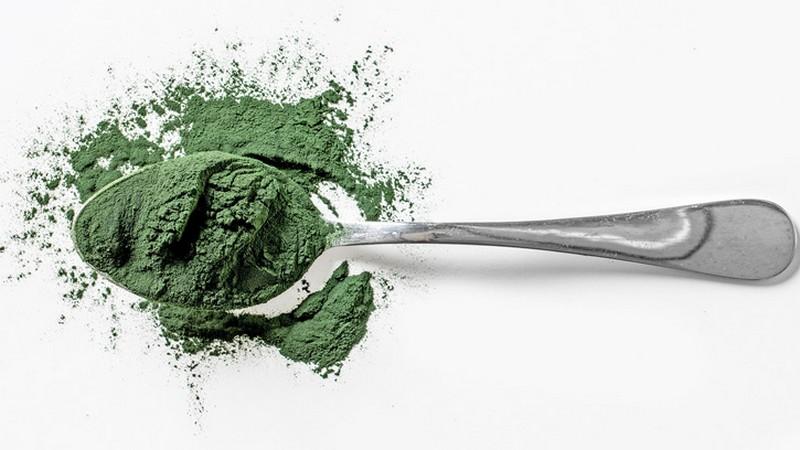Seaweed (a macroalgae) has long been a dietary staple in Asian countries such as Japan, China, and Korea, while consumption of spirulina (a microalgae) dates to the Aztecs, who harvested it from the surface of Lake Texcoco. In the United States, algae may be best known in the food industry as a source of key hydrocolloids, including carrageenan, agar, and alginates. Today, food & beverage uses of algae continue to expand.
The global $4.7 billion algae products market is expected to reach $6.4 billion by 2026, increasing at a compound annual growth rate of 6.3%; North America has the largest share (MarketsandMarkets 2021). Functional and nutritional attributes, as well as the potential sustainability benefits of algae, are driving demand and positioning it as a promising pet food & food of the future.
'Algae has a number of interesting traits that make it stand out as a future food crop, including high quality protein and overall nutritional content, promising scalability and cost, and consumer familiarity,' says Priera Panescu, senior scientist–plant-based specialist at The Good Food Institute. 'Moreover, cultivating algae requires little to no habitable land or agrochemicals, so algae's use as a crop would contribute significantly to a more sustainable food system.'
What Are Algae?
Algae is a broad term used to describe aquatic, eukaryotic organisms that can undergo photosynthesis but lack the vascular system and structures such as leaves, stems, and roots that are found in plants. Microalgae like Chlorella are unicellular, while macroalgae, such as red and green seaweed, are multicellular. Cyanobacteria (so-called blue-green algae) have traditionally been grouped with algae despite being prokaryotic. Arthrospira platensis, or spirulina, is a well-known cyanobacteria.
The algae category is extremely diverse and includes anywhere from 30,000 to over 1 million species (Guiry 2012). While only a tiny fraction of them have been consumed by people, the nutritional benefits of those species are impressive. Chlorella and spirulina, for example, contain up to 70% dry weight protein with all the essential amino acids, while edible seaweeds are known for their fiber content, particularly their soluble fiber (Wells et al. 2017).
Other key nutrients that can be found in algae include omega-3 fatty acids (docosahexaenoic [DHA] and eicosapentaenoic [EPA]), vitamins (B12, C, and E), minerals (calcium and potassium), and a wide range of carotenoids, including lutein, zeaxanthin, astaxanthin, and beta-carotene. In some cases, it's the functional properties of algae—such as thickening, gelling, and emulsifying—that make them important to the food industry.
Algae Ingredients
Mineral Complex. One emerging use of algae is as a natural source of minerals. The Aquamin line of ingredients by Marigot features a marine mineral complex of calcium, magnesium, and 72 trace minerals derived from the red algae Lithothamnion, harvested off the coast of Iceland. Known as a calcified or calcareous seaweed, Lithothamnion deposits calcium within its cell walls, making it a concentrated source of this essential mineral.
Besides being easily absorbed by the body, Aquamin doesn't impart a chalky mouthfeel, unlike some other calcium sources. It's available in dispersible, acid soluble, and water soluble options. Aquamin is currently being used in ready-to-mix sports nutrition powders with additional opportunities in bakery, snacks, and confections.
Protein. Algae is also becoming recognized as a sustainable and animal-free protein ingredient. Algenuity offers a line of protein-rich whole algae powders from Chlorella vulgaris in white, yellow, and lime colors called Chlorella Colours. Besides protein fortification applications in cereals, bakery products, and ready-to-mix powders, Chlorella Colours also contribute functionality in products like plant-based cheeses and yogurts.
Back of the Yards Algae Sciences (BYAS) produces both high-protein Chlorella and spirulina powder, with a focus on 'finding better and more environmentally friendly sources of plant-based protein to feed our planet,' according to Marc Geytenbeek, chief of public affairs at BYAS. The company's zero-waste philosophy is driving development of a range of algae ingredients at its urban farming facility, including algae-based colors and animal-free heme to flavor plant-based meats.
DHA and EPA Omega-3 Oils. DHA and EPA omega-3 fatty acids continue to be in-demand nutrients, with fish as the primary dietary source. However, fish don't actually produce these nutrients—they get them through the microalgae they consume. DSM's algae-derived omega-3 oils, which include life's DHA and life's OMEGA, capitalize on this to offer vegetarian sources of DHA and EPA.
Algal omega-3 oil may also provide a more sustainable option than fish oil since it doesn't contribute to overfishing. Ongoing research into the health benefits of EPA (for heart health) and DHA (for brain and eye development) are supporting the popularity of these ingredients, especially in dietary supplements and functional beverages.
Astaxanthin. One species of algae, the freshwater Haematococcus pluvialis, is among the most concentrated natural sources of astaxanthin—a carotenoid with strong antioxidant capacity that supports mitochondrial health. AstaReal has been optimizing this ingredient for over 30 years, according to Karen Hecht, scientific affairs manager at AstaReal, with ingredients that range from astaxanthin oil to liquid emulsions to water dispersible powders.
While there's a greater awareness in the Asia Pacific region of astaxanthin (a popular antioxidant ingredient in functional yogurts and ready-to-drink juices), it is also beginning to show up in the United States in natural energy and immunity drinks, sales of which have been growing since the advent of COVID-19. Since astaxanthin imparts a red color to products, Hecht recommends orange-to-red formulations like cherry or blood orange. 'The color is what people look for in astaxanthin,' says Hecht, who notes that astaxanthin is what makes salmon red.
Beta-Glucan. Another algae ingredient being used in immune support products is algae beta-glucan. While beta-glucan is a type of soluble fiber often associated with the cardiovascular benefits of oats, research into different types and sources of beta-glucan indicates a number of bioactive properties. The linear beta-1,3-glucan found in the algae Euglena gracilis, for example, is gaining attention for emerging research on its potential role in the immune system.
Current applications of algae beta-glucan include gels, gummies, powders, and functional foods with immune support positioning. Kemin offers two options: BetaVia Pure, a 95% beta-glucan dried whole algae fermentate, and BetaVia Complete, which contains over 50% beta-glucan, along with protein, fatty acids, vitamins, and minerals. Algatech's BioGlena is similar to BetaVia Complete, with a minimum of 55% beta-glucan plus other essential nutrients. Algatech recommends formulating with up to 450 mg per serving of BioGlena in food applications.
Natural Color. The range of pigments found in algae, which include chlorophylls, carotenoids, and phycobiliproteins, has expanded the use of algae as a source of natural colors—particularly natural blue colors. GNT's 'spirulina-based EXBERRY colors provide a range of naturally vibrant blues,' says Jeanette O'Brien, vice president at GNT USA. This has been the Holy Grail for beverage and confections manufacturers seeking a stable blue color for use in clean label formulations.

The high-intensity blues of spirulina-based EXBERRY colors create eye-catching beverages. Photo courtesy of GNT USA
'There are very few naturally occurring blue shades available in fruits and vegetables,' O'Brien notes. Even the anthocyanins found in blueberries 'are only blue at very high pH values, and the color intensity and stability at those values is very low.' GNT relies on evaporation to process its spirulina, avoiding the use of chemical solvents. By blending spirulina with yellow raw materials, GNT can also offer shades of green that 'deliver a spectrum from turquoise to lime green,' says O'Brien.
Future Applications
A current research initiative gives insights into what might be next for algae. One project at the Technion – Israel Institute of Technology aims at texturizing red seaweed proteins to create seafood alternatives. A Technion team, led by Yoav Livney in the Department of Biotechnology and Food Engineering, previously worked on extracting proteins and starches from macroalgae using the emerging technology of pulsed electric field processing.
Now the team has turned its attention to algae-based fish substitutes that capitalize on the nutritional benefits of algal protein, the texturization properties of algal biopolymers, and even the potentially similar 'sea flavor,' explains Livney. 'These are exciting times to be a food engineer and tackle these important global sustainability, animal welfare, and health challenges,' says Livney.
New algae-based bioactives will likely be another key growth area for algae ingredients. Algaia is one company at the forefront of this research, discovering and developing new bioactives from algae lipids, proteins, micronutrients, and pigments.
Algaia is evaluating bioactive properties ranging from antioxidant to antimicrobial to immune-stimulative—all potentially valuable to the food and dietary supplement industries. In addition, the photoprotective effects of certain algae are useful to the personal care industry, while the biostimulant effects are being tapped in agriculture to reduce fertilizer usage.
Looking ahead, the sheer versatility of algae will help ensure a steady stream of innovation in algae ingredients. Consumer interest in algae is expected to keep growing, along with algae's reputation as a healthy and sustainable ingredient.
by Miranda Grizio
You could be interested: Tailored Fiber Solutions: How Functional Fibers Fit Your Process Needs



































